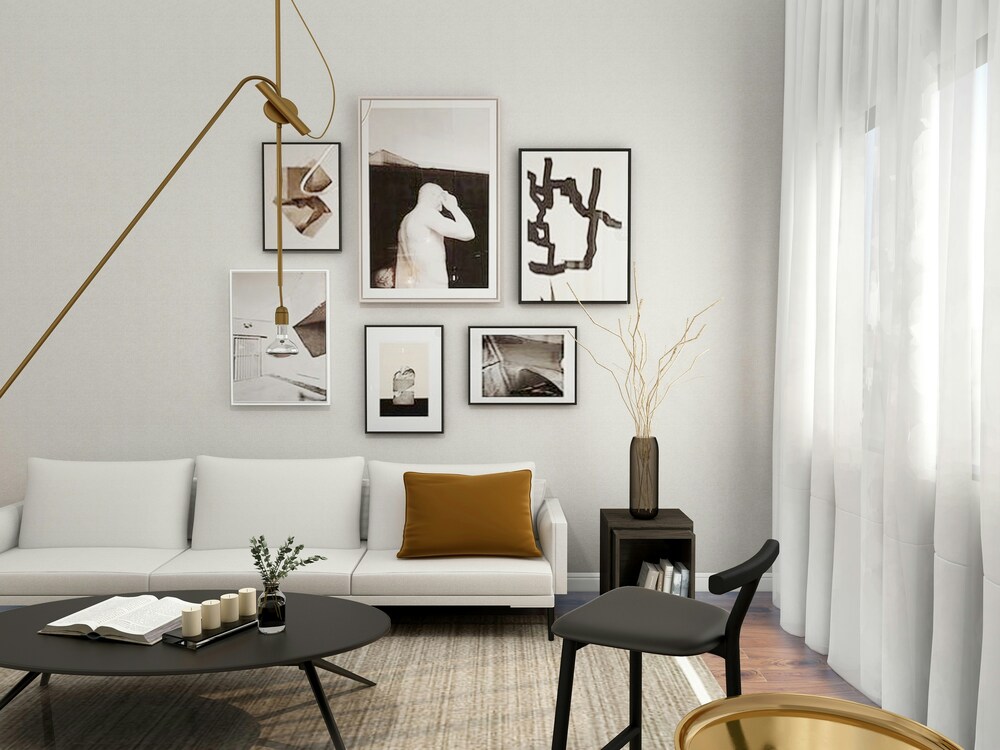- Home
- Articles
- Architectural Portfolio
- Architectral Presentation
- Inspirational Stories
- Architecture News
- Visualization
- BIM Industry
- Facade Design
- Parametric Design
- Career
- Landscape Architecture
- Construction
- Artificial Intelligence
- Sketching
- Design Softwares
- Diagrams
- Writing
- Architectural Tips
- Sustainability
- Courses
- Concept
- Technology
- History & Heritage
- Future of Architecture
- Guides & How-To
- Art & Culture
- Projects
- Interior Design
- Competitions
- Jobs
- Store
- Tools
- More
- Home
- Articles
- Architectural Portfolio
- Architectral Presentation
- Inspirational Stories
- Architecture News
- Visualization
- BIM Industry
- Facade Design
- Parametric Design
- Career
- Landscape Architecture
- Construction
- Artificial Intelligence
- Sketching
- Design Softwares
- Diagrams
- Writing
- Architectural Tips
- Sustainability
- Courses
- Concept
- Technology
- History & Heritage
- Future of Architecture
- Guides & How-To
- Art & Culture
- Projects
- Interior Design
- Competitions
- Jobs
- Store
- Tools
- More
Unlocking Your Personal Style: Top Tips for Finding Interior Design Concepts

Ever felt overwhelmed by the myriad of design choices when it comes to sprucing up your home? We’ve all been there. Whether it’s deciding on a bold color versus a daring print, or figuring out the perfect spot for a cozy fireplace, there’s a world of possibilities. But don’t fret, we’re here to guide you through the maze of interior design concepts.
In this article, we’ll delve into the world of home decor, from floor-to-ceiling color schemes to asymmetrical artwork placements. We’ll also explore how different elements can create an illusion of space, add character, or simply make a statement. And for those hesitant about making a bold move, we’ll discuss temporary solutions like peel-and-stick wallpaper.

Table of Contents
ToggleFinding the Best Interior Style
In the realm of interior design, it’s essential to discover a style that aligns with your personal aesthetic. Here, we’ll provide some valuable tips to help define your unique interior design style.
The Importance of Personal Style in Interior Design
Every individual has a unique set of preferences. In interior design, these preferences take shape as one’s personal style. It’s profoundly important to identify your own personal style — not only does it reflect your tastes and personality, but it also lays the foundation for a cohesive design scheme. As David Mann, founding partner at MR Architects, pointed out, “…it’s the best way to start the process of critically assessing who you are, what’s important to you, and how to translate that into the built environment.”

Discovering Your Preferred Colors and Themes
In the quest for your personal interior design style, color schemes play a significant role. Start by identifying your favorite colors. For inspiration, you might consider the Pantone color of the year (Viva Magenta for 2023, for example), or other trending shades. However, it’s not just about the preference in color — design themes also matter. Do you enjoy minimalistic designs or prefer bright, bold patterns? Save images of designs and themes you’re drawn to — this feeds the algorithm on social media platforms, which in turn, offers up more interior images tailored to your preferences.
Using prints can create a new theme and a unique personal style in your home by allowing you to incorporate your favorite designs, colors, and motifs into your decor. Prints offer endless possibilities for customization, enabling you to mix and match various elements to reflect your individuality. High-quality papers from Red River Paper can enhance the vibrancy and longevity of your prints, ensuring that your decor remains striking and personal. Whether you prefer abstract art, nature photography, or vintage posters, incorporating prints into your home decor can transform your space into a true reflection of your style.
Using your Favorite Eras and Travels for Inspiration
Another great source of inspiration for finding your personal interior design style can be found in your past experiences and travels. Reflect on places you’ve visited, cultures that have intrigued you, and historical eras that you adore. For example, a mid-century modern style may appeal to someone who likes the clean lines and natural style of the 50s and 60s, while a bohemian style might be the ideal choice for people who prefer an eclectic mix of colors, patterns, and textures. In essence, your experiences can shape the ideal atmosphere for your space — so don’t be afraid to tap into your bank of memories for design inspiration.

Tools for Finding Interior Concept Suggestions
Now that you’ve got a sense of your personal interior design style, it’s time to explore some innovative tools you can use to visualize and plan your space. Here comes the role of digital platforms that provide a vast reserve of design inspiration and allow us to assemble our thoughts in an organized way.
Using Pinterest and Instagram for Interior Design Inspiration
Social media platforms, like Instagram and Pinterest, have become a treasure trove for interior design enthusiasts. You can easily follow design-centric accounts, save and pin images that inspire you. Handy features like creating collections and boards on Pinterest allow you to consolidate all your favorite ideas in one place.
Instagram, on the other hand, brings you face-to-face with the latest design trends and presents a wide range of home decor options from different geographical and cultural perspectives. Do note that consistently saving and pinning images that catch your eye can help your social media algorithms to present similar content, thus making your search for the perfect design even easier.
Creating Your Own Vision Board
Once you are saturated with ideas, it’s time to distil them into a solidified vision. The first step: create a mood board. This tool enables you to gather and arrange elements of your chosen interior style—be it photographs of rooms, patterns, colors, or specific furniture items.
Using a digital tool like Fiverr or a good old corkboard, you can start by placing the photos and ideas that most resonate with your personal aesthetic. Focus on balancing color schemes, textures, and themes. You might find yourself surprised at the styles that emerge from your board. Remember, a mood board is not set in stone—it’s there to inspire you, to serve as a starting point. And as your style evolves, you can always update it with fresh ideas and inspirations.
In the next section, we’ll dive deeper into how virtual sessions can help bring your envisioned design to life. But for now, explore, experiment and get those creative juices flowing with these tools.

Balancing Aesthetics and Practicality in Interior Design
Achieving that sweet spot between aesthetic appeal and functional design can sometimes feel like a magic trick. But don’t worry, we’ve got some tips to guide you through it.
The Role of Light and Color in Room Ambiance
Lighting and color schemes play pivotal roles in shaping a room’s atmosphere and mood. Natural light is a fantastic asset, making spaces feel larger and more inviting. But you also have control over artificial light – consider warm, dimmable lights for a cozy feel or brighter lumens for a workspace vibe. Further, accent lights can highlight decorative pieces, attracting attention and adding depth to the room.
Color relays a significant message too. Light, neutral shades can create an illusion of spaciousness, while darker or bold tones add instant drama and depth. To balance these extremes, consider using a light base color for walls and introducing vibrant hues through accent pieces like throw pillows, artwork, or rugs.

Incorporating Multi-Purpose and Multifunctional Furniture
Practicality is a key element in interior design, especially in smaller spaces. Multi-purpose furniture, like beds with built-in storage or an ottoman that doubles as a coffee table, can be game-changers. Such pieces not only save crucial space but also add an unexpected twist to conventional design, inspiring curiosity and interest.
Similarly, mobile furniture pieces, like wheeled tables or lightweight chairs, allow flexibility for various activities and events. This concept of ‘Multi-functional Furniture’ allows you to customize your space according to immediate needs, bringing a blend of aesthetics and practicality to your interior design journey.
Although aesthetically pleasing, remember that home design should not compromise comfort and functionality. Always aim for a harmonious blend of both, creating a home that’s not merely beautiful but also incredibly functional.

Tips for Enhancing Your Space with Accessories
As we navigate the interiors of our homes, accessories play a significant role in affirming our personal style and making a space feel complete. Here are a few ways to spruce up your space with some well-chosen accessories.
Creating an Oasis With Accessories and Collections
- Express Personality: Show off your unique taste and personality by curating accessories that mean something to you. Whether it’s travel souvenirs or vintage camera collections, adding personal touches to your space elevates it from being a house to a home.
- Create Focal Points: An intriguing sculpture or an arresting piece of wall art can draw the eye and become a conversation starter. Strategically place these pieces around your home to create visual interest.
- Layer with Textiles: Rugs, throws, and cushions are not just functional – they’re an avenue for creativity. Experiment with textures and patterns to add depth and interest to your space.
- Include Greenery: Incorporating plants not only brings a bit of nature indoors but also adds color and life to your interior. Plus, certain plants can improve air quality, which is a bonus!
- Use Books: Books aren’t just for reading; they can be an accessory too. From coffee table books to towering bookshelves, they add color, scale, and a personal touch to your space.
- Expand Your Space: Mirrors can give the illusion of more space, making smaller rooms appear larger. Position them opposite windows or doors to reflect light and views, adding depth to your room.
- Make a Statement: A large mirror on a wall, especially one with a unique frame, can act as a piece of art, giving your room a focal point and intriguing visual element.
- Enhance Lighting: Since mirrors reflect light, they can brighten up dark corners and make your space feel lighter and more open.
- Check Yourself: Apart from being decorative, mirrors are practical. Having a mirror near the entryway allows you a quick check before leaving hom.
By strategically using accessories and mirrors, any space can be transformed into a stylish and comfortable oasis reflecting personal style.

Interior Design Theme Ideas
Exploring the world of interior design themes can be quite fascinating. It’s an area that presents numerous opportunities for creativity, customization, and personal expression. Here, we’ll dig deep into some interesting and top trending interior design themes, and some exciting trends capturing industry attention right now.
Understanding the Current Trending Themes
There are numerous prevailing design themes that are currently trending in the interior design world, each with its own characteristics and charm. For instance, many interior designers are finding a balance between contemporary and traditional styles. Contemporary themes prioritize straight lines, clutter-free spaces, and a modern finish, whereas traditional themes usually incorporate regional-specific or time-age-specific finishes and aesthetics.
Designers often recommend themes based on client’s lifestyle and preference. For example, in a Toronto home, designer Montana Labelle opted for asymmetrical artwork, to create a blend of modernity and traditional equality in an interesting and visually appealing manner. Meanwhile, in a mid-century Los Angeles home, designer Garrett Hunter worked with the original floor plan and architectural details to enhance the existing architecture.

Reflective Surfaces and Layered Lighting: New Trends
Broadening our horizons beyond specific themes, we find emerging trends that cut across various design themes. Reflective surfaces and layered lighting are making waves in the industry. For instance, in a West Hollywood apartment, architect Andre Herrero designed a steel fireplace surround with double doors creating a reflective surface that conceals the living room TV. This approach not only enhances the aesthetics but also provides a blend of functionality and style.
Layered lighting also adds more depth, character, and ambiance to interior spaces. This could range from different lighting fixtures for functional, accent, or decorative purposes. The right blend of layered lighting doesn’t just illuminate space but creates an impactful design statement.
By understanding these themes and trends, one can create interiors that aren’t just beautiful and functional, but also resonate with personal style and contemporary design standards.

Using Color in Interior Design Concepts
As we dive deeper into the art of interior design, let’s explore the crucial role color plays and how it aids concept creation. In this section, we’ll share strategies and tips on color schemes, and how you can use them effectively to balance beauty and functionality.
How to Combine Colors for Maximum Impact
There’s an array of methods to pair colors in interior design, but some key concepts prevail:
- Complementary Pairing: This involves selecting hues that sit opposite each other on the color wheel. Think blue-orange or yellow-purple combinations, which create a dynamic contrast and usher in a lively energy into the space.
- Analogous Pairing: Here, you choose colors that neighbor each other on the color wheel. Combinations like blue-green and turquoise bring out a harmonious and calming environment due to their natural gradient.
- Monochromatic Scheme: This technique involves varying shades and tints of the same color. You can play with diverse intensities of a color like blue, including navy and teal, providing depth and unifying the space through a single color thread.
- Triadic Scheme: This revolves around selecting three colors evenly spaced on the color wheel. A green-orange-purple combination, for instance, delivers a vibrant, yet balanced look.
Whether you’re aiming for contrast or harmony, experiment with these approaches, and remember that the best outcomes often emerge from thinking outside the box.

How Many Colors to Use in a Room for Balance
Typically, for a well-balanced atmosphere, it’s wise to stick to a maximum of three colors. The dominant color should cover about 60% of the room’s overall look. A secondary color can consume around 30% and bring in a contrasting or complementary effect. Lastly, an accent color brightens up the final 10%, adding character and vibrancy to the scene. This 60-30-10 rule elegantly structures your space without overwhelming it.
However, remember that design is a creative field, and rules are here to be played with! Don’t shy away from blending various color combinations to create a personalized space. And for the brave-hearted, the up-and-coming Pantone color of 2023, ‘Viva Magenta’, promises an electrifying pop of vibrancy. Don’t hesitate to walk on the wild side! The interior design world is your color-filled oyster, after all.
Submit your architectural projects
Follow these steps for submission your project. Submission FormLatest Posts
BXB Studio’s Hybrid Interior: Redefining the Modern Architectural Workplace
The Warsaw headquarters of BXB Studio was established in a modest 70...
5 Must-Know Interior Design Trends in American Homes
From warm minimalism to bold oversized artwork, these five interior design trends...
How Open Kitchens Create a Sense of Space Indoors (Without Sacrificing Function)
Open kitchens: see how sightlines, lighting, and smart layouts make rooms feel...
The Revival of Chunky Fiber Crafts in Modern Interior Design
Contemporary interior architecture has shifted away from hard minimalism. After a decade...












Leave a comment